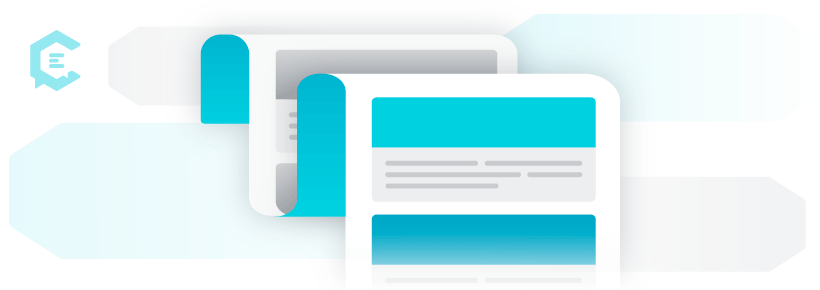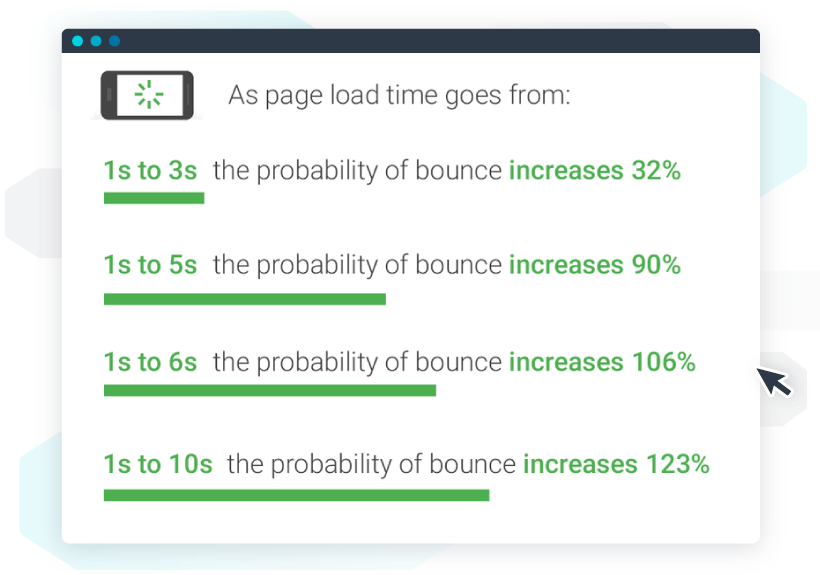What Is On-Page Optimization? 9 Quick Points to Check
- Hamad Abdel Aal
- Mar 23, 2021
- 7 min read
What is on-page optimization? On-page optimization is a set of SEO tactics that you implement on your website (also called a web page, hence the term on-page) in order to gain visibility in search and, as a result, more traffic.
On-page optimization tactics are probably the first that come to mind when you’re thinking about SEO. They’re the primary reason you perform keyword research, so that you can properly optimize your own pages for search.
On-page optimization tactics include:
Optimizing title tags and meta descriptions
Using optimized, descriptive content headings (H1, H2, etc.)
Using optimal content length
Optimizing your images
Using SEO-friendly URLs
Uploading a sitemap to Google Search Console
Using both internal and external contextual links where appropriate and advantageous
Making sure your website is fast enough so users don’t bounce
Let’s go over a few of these tactics in depth.
1. Meta title and meta description optimization
Think of your meta title and description like an ad. They should be straightforward, compelling, include keywords, and follow the character limits put in place by Google.
Together, they form your result in search:

In this example, the purple link is ClearVoice’s home page title, and the text below it is our meta description.
However, it’s important to note that your perfectly optimized and well-written tags aren’t always what Google shows when choosing your page to rank in their search results. It used to be that way, but in recent years, Google has begun changing that text in your result to reflect what a searcher typed into the search box.
Here’s what Google has to say on the topic:
“…sometimes even pages with well-formulated, concise, descriptive titles will end up with different titles in our search results to better indicate their relevance to the query. There’s a simple reason for this: the title tag as specified by a website owner is limited to being static, fixed regardless of the query.When we know the user’s query, we can often find alternative text from a page that better explains why that result is relevant. Using this alternative text as a title helps the user, and it also can help your site. Users are scanning for their query terms or other signs of relevance in the results, and a title that is tailored for the query can increase the chances that they will click through.”
In short, spend some time on them but don’t get angry when Google shows something else. You can’t stop it from happening.
2. Page title and meta description best practices
Ideal length for your title is 60 characters or fewer
Idea length for your meta description is between 155 and 160 characters
Don’t keyword stuff
Put your company/brand name at the beginning of your title on your home page
Use your most important keyword at the beginning of your title tag
Think of them as an ad for why a user should click on your page from search results
They should very clearly indicate exactly what’s on your page

3. Content length
How long your content is and how it’s organized can impact your organic visibility.
In a study of our own blog, we found that:
“…longer articles perform better, especially for organic search traffic. While the top 10 percent of ClearVoice articles in terms of earned organic search visits averaged 1,834 words in length, the bottom 10 percent of ClearVoice articles in terms of earned organic search visits averaged only 821 words in length.”
In general, multiple studies have confirmed that quality content of longer lengths performs better in search.
Does that mean that all of your content needs to be 2,000 words? No! If you’re looking just to publish an informative piece for your audience that doesn’t necessarily have to be the best on the ‘net about your subject, you don’t need to go crazy on it. However, if you are looking for visibility and search clicks, it’s usually best to write a longer, more in-depth piece.
Also, some subjects just don’t warrant 2,000 words. Don’t try to stretch your content with unnecessary words just to make it longer. You’ll sacrifice your quality.Some subjects just don't warrant 2,000 words. Don't try to stretch your content with unnecessary words just to make it longer. You'll sacrifice your quality. #SEO #onpageSEO #contentstrategy Click To Tweet
4. Content headings
When crawling your content, Google’s crawlers look at your headings to help decode what your page is about. Therefore, they need to appear in all the right places to break up your content into digestible pieces and tell Google just what each piece is about.
There’s some misconception out there that H1s are more valuable than H2s, and H2s more than H3s, and so on in terms of helping your search rankings. It’s not true. It’s also a misconception that content headings still impact your search rankings in a big way because they don’t. They used to, but Google phased that out many years ago, along with other keyword stuffing tactics that used to work to manipulate rankings.
Here’s what the lead of the Search Relations team at Google, John Mueller, said in a Webmaster Hangout in early 2020:
“…what we use these headings for is well we have this big chunk of text or we have this big image and there’s a heading above that, therefore maybe this heading applies to this chunk of text or to this image.So it’s not so much like there are five keywords in these headings, therefore this page will rank for these keywords but more, here’s some more information about that piece of text or about that image on that page.And that helps us to better understand how to kind of frame that piece of text, how to frame the images that you have within those blocks. And with that it’s a lot easier to find… the right queries that lead us to these pages.”
In conclusion, use headings for your readers first, and Google second. If you’re using them correctly to give your readers an easy way to peruse your article, then you’re probably using them correctly for Google, too.

5. Optimized images
There are a few different things you can do to your images to make sure they’re optimized not only for your site, but for the web.
First of all, when you’re going to upload an image to your website (to use in a blog post, for instance), make sure it’s not a huge file size. Large file sizes can make a page take a longer time to load, which has been proven to make website visitors bounce away.
Also, before you upload an image, give it a few real words for a file name. Google has no idea what “IMG_47649” is depicting, whereas “bounce-rate-graph” or “kids-sledding-down-a-hill” is much clearer.
Once uploaded, give your image an ALT tag. Describe your image in a short description, with a keyword included (if it happens naturally), and be specific. Not only can this improve your on-page SEO, but it also makes your site more accessible.
6. SEO-friendly URLs
Your page’s URL is a prime spot for a keyword. Making your URL whatever the title of your page is, is usually a solid option, but not every time.
Here are a few SEO friendly URL best practices:
Make them reflect your page content concisely — short URLs are best
Use a keyword, but don’t overdo it by cramming several in there
Use hyphens (-) to separate words
Use words wherever possible rather than numbers
If you’re planning to update your content often (make it evergreen content), avoid using a year in the URL
Avoid uppercase letters
Make them look nice — short, nice-looking URLs are more compelling to share, and many users appreciate the simplicity

7. Contextual links
While your navigation probably does a good job of getting website users where they want to go, using contextual links can add a really rich experience to your content.
Any time you’re writing content for your site and you refer to something that you’ve covered elsewhere (say, in another blog post), make sure you link to it! Not only does this help users find their way around your site in the best way possible, but it also helps Google find all your site pages and navigate your site.
Contextual links to your own pages can also help show Google crawlers what the most important content is on your site. If you have a couple of content pieces that are linked to over and over again from several of your pages, they’re clearly very important.
Also, many people think that they shouldn’t use contextual links to link out to others because that will lead users away from your site. However, it’s actually true that those links strengthen your content!
Sure, maybe don’t link to your direct competition, but go ahead and link out to content that bolsters yours. Linking to other subject matter experts probably helps increase your E-A-T score (expertise, authority, and trustworthiness). It also gives Google more context for your content, and adds depth for your users.
8. Anchor text
When adding contextual links, there are a few things you should know about anchor text. In general, you want to link the most appropriate words in your sentence, like above where I just linked “E-A-T score” to an article giving more information about E-A-T scores.
You do not want to say, “find an article on E-A-T here” and link the word “here.” That word is not at all descriptive to Google and will not help their crawlers understand what the content found at that link (“here”) should be about. Whereas “E-A-T score” is clearly about E-A-T.
However, be careful not to use unnatural sounding anchor text, just to appease search engines. Make it flow into your natural writing. If you’re familiar with writing for SEO, this should be a cinch.
9. Website speed
While I’ve included sitemaps and website speed here in this on-page optimization article, they mostly belong to a different category of SEO — technical SEO. For the sake of the completeness of this article, though, I’m going to touch on them here.
Technical SEO is all about making sure your website runs as smoothly as possible. Technical SEO is very popular this year because of Google’s upcoming Page Experience Update, but really has been at the forefront ever since Google announced that they’d be taking site speed into consideration when choosing who to rank in July of 2018.
In order for website visitors to have the best possible experience, you must make sure your website is fast. Nobody is waiting around for websites to load anymore! Studies have shown that users bounce away very quickly when a website is slow to load. The most official numbers from Google are way back from 2017, but even then, everyone wanted fast browsing, with bounce rate increasing 90 percent when load time went from 1 second to 5 seconds on mobile:

Image source: Think With Google
Years have passed since Google released these numbers, so people are undoubtedly waiting even less time now for pages to load.



Comments